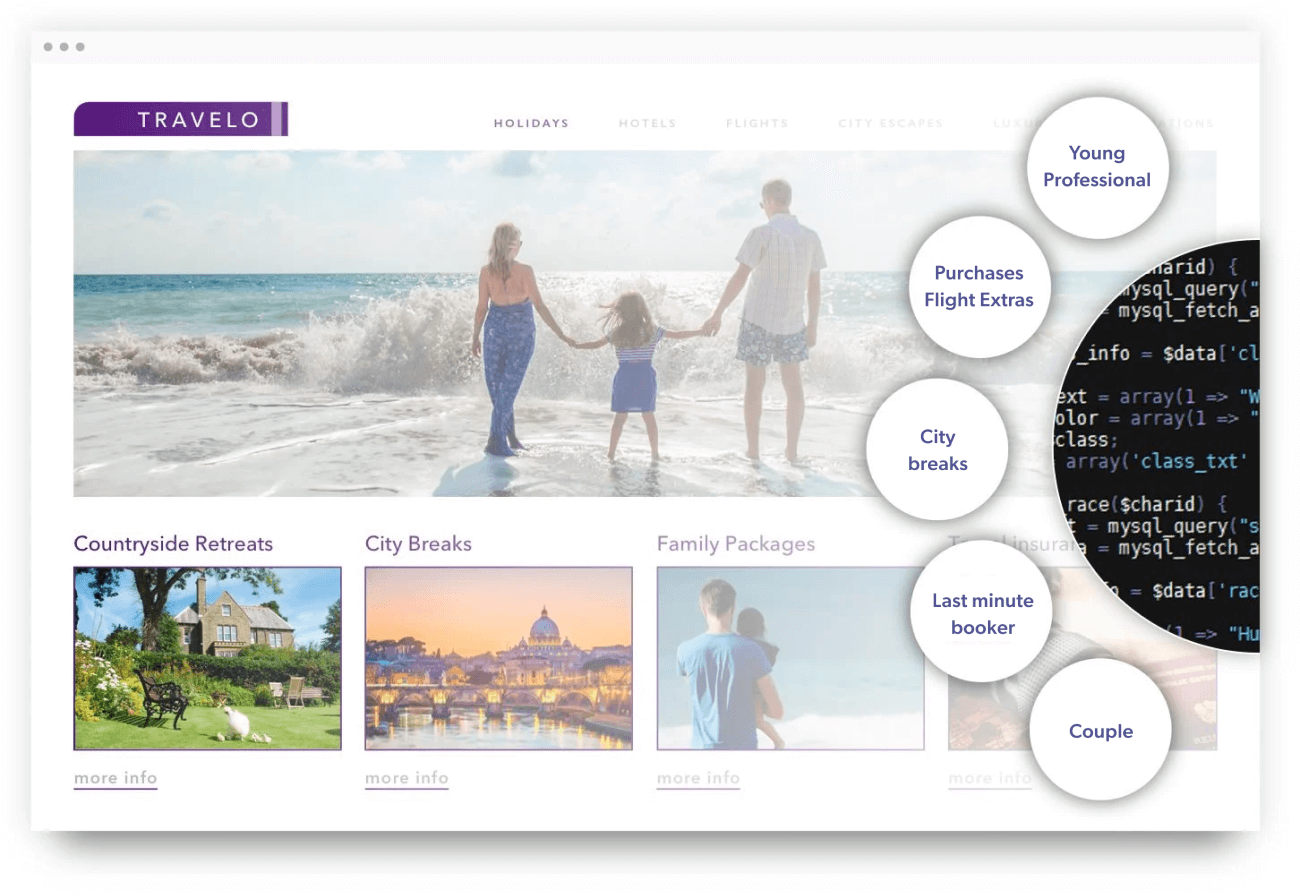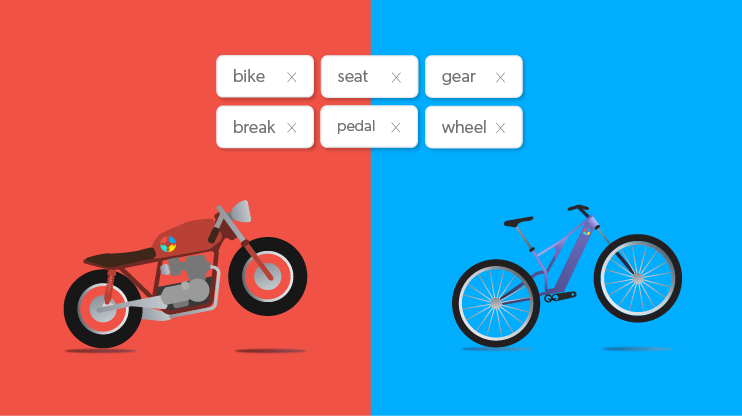When your customers are drowning in a sea of content, which makes for a better life raft: smart tags or a smart search?
Eighty percent of U.S. adults know exactly what they want when they visit a website, and for them, that on-site search box is destination number one. Those searchers are more likely to convert, too. We’re not talking small numbers here — some estimates peg the difference at five to six times higher than the average visitor who clicks their way through.
But here’s the rub. Those high-value searchers don’t often find what they’re looking for. At least, in terms of experience.
Let’s put that in perspective. Forrester estimates that 79% of U.S. adults shopping online want advanced search features. They expect the ability to narrow things down by price, brand, style, etc. Yet 61% of retail sites don’t meet their search expectations… and 15% can be classified simply as “broken.” (No one wants a broken lifeboat.)

In short, they don’t want to wade through every piece of content that has the word “phone” in it. They want to find that one support article, for their make and model, that addresses their specific issue. Or they want to find the product details for an upgrade to a newer model. Or they’re looking for that preferred customer pricing they saw in your marketing.
How are you going to deliver it to them? Both Adobe Experience Manager smart tagging and relevant search are potential solutions that can help connect searchers with the results — and experiences — that actually matter to them as individuals.
But not all solutions are created equal.
Get Smart on AEM Smart Tagging
Don’t get us wrong. AEM smart tagging is an incredibly useful tool, particularly when it comes to organizing and surfacing content based on keywords.
Basically, smart tagging starts by looking at a digital asset — an image, video, article, product description, etc.— and applying AI to automatically identify relevant keywords that a customer or employee might use to find it.
We’re glossing over a lot of the nitty-gritty around training the AI models, but you get the idea.
And that’s a pretty good start! After all, a smart tag strategy…
- Cuts down on work for your publishing teams or content teams, since they don’t have to manually assign tags that they think are relevant for each AEM asset
- Creates consistency in the tags you use — the same vocabulary applies no matter who authors the asset
- Allows for customized tag structure and taxonomy that aligns with the way you do business
- Identifies tags that you might otherwise have forgotten to add or didn’t think about in the first place
- Gives you the power to promote specific tags so they’re more likely to pop up on a search results page
- Can compensate for typos, misspellings, or alternative search terms (like “running shoes” and “runners”)
- Helps highlight where you have a lot of content and where content is lacking
The end result is a repository of content that’s efficiently organized and categorized, easy to expand and effortless to maintain. All essential parts of digital asset management within Adobe Experience Manager when you’re dealing with loads of content.
But AEM smart tags don’t capture the whole search experience. What about the customer’s individual intent? What about information that lives outside of that repository, stored in different formats with different terminology?
Relevant Search Saves the Day
A frustrated customer isn’t a customer who’s likely to stick around and try again.
In a world where customers increasingly say bad experiences turn them away (and even a single bad experience will do), it’s increasingly important to deliver a personalized experience with the most relevant results from query one.
While a smart tag focuses on the asset, a relevance-based search strategy focuses on the searcher — who they are, why they’re visiting, and what they’re looking for — to get as close as possible to the right result from the word “go.”

Relevant website search is a data-driven approach that goes beyond the asset into context, using data available from shopping history, in-session behaviors, and even basic analytics information like time of day, location, browser and device.
That’s a lot more than a smart tag alone can do.
Connecting All Your Data Sources
Migrating, normalizing and cleaning your data… it’s as laborious, tedious, repetitious and prone to error as it is necessary for old-school search solutions. There’s no easy way to bring disparate sources of information together into one point of entry without a little extra help. After all, content silos still exist, as much as we like to try and break them down.

That’s why it’s a dream for many organizations to have a single destination for all searches: a spot where you can enter a term or a keyword, scan every source and find the right result. All sourced automatically, no manual intervention required.
That’s the kind of smart organization an AI-powered site search platform can provide.
Curated Experiences Across Every Channel
There’s no “default” search experience here — with built-in headless capabilities, even the interface is personalized. Searchers receive curated experiences built around their individual intent, profile, and behavior.
And the experience stretches between multiple touchpoints, across every channel you manage, across every asset you create, on any device. Whether it’s a laptop, a mobile phone or a car’s infotainment system.
Powered by AI, it’s the future of delivering personalization — and convenience — at scale.
Insights from first visit to 50th
You don’t start from ground zero for first-time visitors. Smart search remembers everyone who has visited before and can pair past successes with even limited amounts of data to serve up what most people in a similar context found helpful. We call this “the wisdom of the crowd.”
And when paired with in-session behavioral data, it makes surfacing the right result from the vast universe of content easier and more precise.

Returning visitors benefit too, as you get to know them and their journey better. The more they interact with you, be it on your website or on a support call, the better you can provide them with only what’s relevant to their needs.
Insights like this can help you determine what content serves your visitors and what’s being ignored. It’s also a great way to identify where searches come up empty — in other words, where you could use a little more content.
Smooth Sailing on the Content Sea
When it comes to navigating through a sea of content, “any port in a storm” isn’t good enough anymore. Visitors know what they want before they land on your site. They expect personalized content before they drop anchor.
And to provide that harbor, you’ll need more than Adobe Experience Manager and smart tags can provide solo. Relevant search provides robust and innovative ways to connect your content and your experiences across platforms and channels.
Now that’s smooth sailing.
Dig Deeper
Learn how AI and Adobe Experience Cloud pair to deliver best-in-class digital experiences for all audiences.
And if you’re looking for tips and tweaks for conversion-creating site search in Adobe Experience Manager, check out our ebook, Top Tips to Boost Conversions with Personalized Site Search in Adobe Experience Manager.


